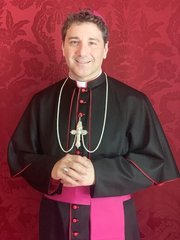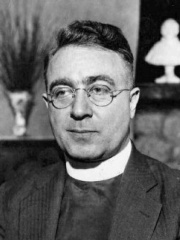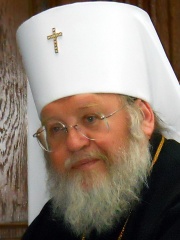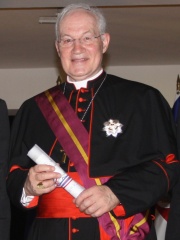
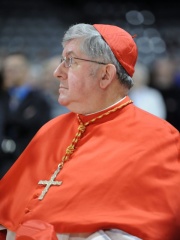
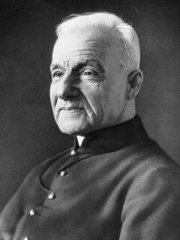
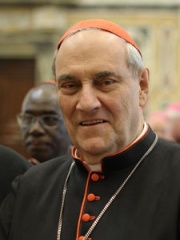
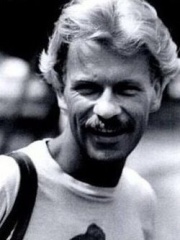


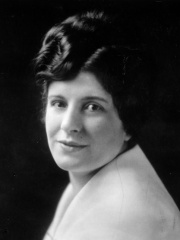
The Most Famous
RELIGIOUS FIGURES from Canada
This page contains a list of the greatest Canadian Religious Figures. The pantheon dataset contains 3,187 Religious Figures, 15 of which were born in Canada. This makes Canada the birth place of the 34th most number of Religious Figures behind Croatia, and Sweden.
Top 10
The following people are considered by Pantheon to be the top 10 most legendary Canadian Religious Figures of all time. This list of famous Canadian Religious Figures is sorted by HPI (Historical Popularity Index), a metric that aggregates information on a biography's online popularity. Visit the rankings page to view the entire list of Canadian Religious Figures.

1. Marc Ouellet (b. 1944)
With an HPI of 68.95, Marc Ouellet is the most famous Canadian Religious Figure. His biography has been translated into 30 different languages on wikipedia.
Marc Armand Ouellet (French pronunciation: [maʁk welɛ]; born 8 June 1944) is a Canadian Catholic prelate who served as prefect of the Dicastery for Bishops and president of the Pontifical Commission for Latin America from 2010 to 2023. He is a member of the Sulpicians. Ouellet served as Archbishop of Quebec and Primate of Canada from 2003 to 2010. He was made a cardinal by Pope John Paul II on 21 October 2003 and was considered a possible candidate for election to the papacy in 2005, 2013 and 2025. He spent his early career as a priest from 1972 to 2001 developing his credentials as a theologian and working as a seminary teacher and administrator in Canada, Colombia, and Rome. He also served briefly in the Roman Curia from 2001 to 2003.

2. Thomas Christopher Collins (b. 1947)
With an HPI of 64.14, Thomas Christopher Collins is the 2nd most famous Canadian Religious Figure. Her biography has been translated into 24 different languages.
Thomas Christopher Collins (born 16 January 1947) is a Canadian cardinal of the Catholic Church. He was the Metropolitan Archbishop of Toronto from 2007 to 2023, the Bishop of Saint Paul in Alberta from 1997 to 1999, and Archbishop of Edmonton from 1999 to 2006. He was elevated to the rank of Cardinal by Pope Benedict XVI on 18 February 2012.

3. André Bessette (1845 - 1937)
With an HPI of 61.90, André Bessette is the 3rd most famous Canadian Religious Figure. His biography has been translated into 18 different languages.
André Bessette, C.S.C. (born Alfred; 9 August 1845 – 6 January 1937), commonly known as Brother André (French: Frère André) and since his canonization as Saint André of Montreal, was a lay brother of the Congregation of Holy Cross and a significant figure of the Catholic Church among French Canadians. He is credited with thousands of reported healings associated with his pious devotion to Saint Joseph. Bessette was declared venerable in 1978 and was beatified by Pope John Paul II in 1982. Pope Benedict XVI approved the decree of sainthood for Bessette on 19 February 2010, with the formal canonization taking place on 17 October 2010. He is the first Canadian living after Confederation to be canonized.

4. Jean-Claude Turcotte (1936 - 2015)
With an HPI of 58.54, Jean-Claude Turcotte is the 4th most famous Canadian Religious Figure. His biography has been translated into 20 different languages.
Jean-Claude Turcotte (French pronunciation: [ʒɑ̃klod tyʁkɔt]; 26 June 1936 – 8 April 2015) was a Canadian Roman Catholic cardinal who served as the Archbishop of the Roman Catholic Archdiocese of Montreal from 1990 to 2012.
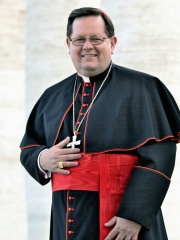
5. Gérald Lacroix (b. 1957)
With an HPI of 57.25, Gérald Lacroix is the 5th most famous Canadian Religious Figure. His biography has been translated into 26 different languages.
Gérald Cyprien Lacroix ([lakʁwa]; born July 27, 1957) is a Canadian Catholic prelate who has served as Archbishop of Quebec and Primate of Canada since 2011. He was previously Auxiliary Bishop of Quebec from 2009 to 2011. A member of the Council of Cardinals and the Secular Institute Pius X, he was made a cardinal in 2014.

6. Gaëtan Dugas (1952 - 1984)
With an HPI of 57.13, Gaëtan Dugas is the 6th most famous Canadian Religious Figure. His biography has been translated into 21 different languages.
Gaëtan Dugas (French: [ɡaetɑ̃ dyɡa]; February 20, 1952 – March 30, 1984) was a Canadian flight attendant claimed to be "patient zero" during the AIDS epidemic, popularized notably by Randy Shilts's 1987 book And the Band Played On. The claim has been refuted through subsequent scientific scrutiny. Genetic analysis later determined that several thousand gay men already had HIV in the United States prior to Dugas' own infection. Dugas worked as a flight attendant for Air Canada and died in Quebec City in March 1984 as a result of kidney failure caused by AIDS-related infections. In March 1984, a study tracked Dugas, along with other gay and bisexual men, to indicate his role in a particular cluster of 40 AIDS cases in the United States. He was named "Patient O" with "O" standing for "Out-of-California", however And the Band Played On later used the term "Patient 0" standing for "zero" and put significant media focus on Dugas. A 2016 study confirmed that Dugas did not bring HIV to the United States, and he was not Patient Zero, via genetic analysis of stored blood samples, supported by historical detective work.

7. Paul Grégoire (1911 - 1993)
With an HPI of 54.11, Paul Grégoire is the 7th most famous Canadian Religious Figure. His biography has been translated into 16 different languages.
Paul Grégoire, (October 24, 1911 – October 30, 1993) was a Canadian Cardinal of the Roman Catholic Church. He served as Archbishop of Montreal from 1968 to 1990, and was elevated to the cardinalate in 1988.

8. Charles Scicluna (b. 1959)
With an HPI of 53.40, Charles Scicluna is the 8th most famous Canadian Religious Figure. His biography has been translated into 15 different languages.
Charles Jude Scicluna (born 15 May 1959) is a Canadian-Maltese prelate of the Catholic Church who has served as Archbishop of Malta since 2015. Both as a curial official and since becoming a bishop, he has conducted investigations into sexual abuse by clergy on behalf of the Holy See and led a board that reviews such cases. He has been called "the Vatican's most respected sex crimes expert". He held positions in the Roman Curia from 1995 to 2012, when he was appointed Auxiliary Bishop of Malta. Since November 2018, Scicluna has been an Adjunct Secretary of the Dicastery for the Doctrine of the Faith, the curial body responsible for dealing with clerical sexual abuse cases on minors around the world.

9. Aimee Semple McPherson (1890 - 1944)
With an HPI of 52.85, Aimee Semple McPherson is the 9th most famous Canadian Religious Figure. Her biography has been translated into 16 different languages.
Aimee Elizabeth Semple McPherson (née Kennedy; October 9, 1890 – September 27, 1944), also known as Sister Aimee or Sister, was a Canadian-born American Pentecostal evangelist and media celebrity in the 1920s and '30s, famous for founding the Foursquare Church. McPherson pioneered the use of broadcast mass media for wider dissemination of both religious services and appeals for donations, using radio to draw both audience and revenue with the growing appeal of popular entertainment and incorporating stage techniques into her weekly sermons at Angelus Temple, an early megachurch. In her time, she was the most publicized Protestant evangelist, surpassing Billy Sunday and other predecessors. She conducted public faith healing demonstrations involving tens of thousands of participants. McPherson's view of the United States as a nation founded and sustained by divine inspiration influenced later pastors. National news coverage focused on events surrounding her family and church members, including accusations that she fabricated her reported kidnapping. McPherson's preaching style, extensive charity work, and ecumenical contributions were major influences on 20th-century Charismatic Christianity.
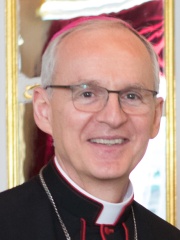
10. Petar Rajič (b. 1959)
With an HPI of 52.30, Petar Rajič is the 10th most famous Canadian Religious Figure. His biography has been translated into 18 different languages.
Petar Antun Rajič (born 12 June 1959) is a Croatian/Canadian prelate of the Catholic Church who has worked in the diplomatic service of the Holy See since 1993. He was named Apostolic Nuncio to Italy and San Marino on 11 March 2024.
People
Pantheon has 15 people classified as Canadian religious figures born between 1845 and 1971. Of these 15, 7 (46.67%) of them are still alive today. The most famous living Canadian religious figures include Marc Ouellet, Thomas Christopher Collins, and Gérald Lacroix. The most famous deceased Canadian religious figures include André Bessette, Jean-Claude Turcotte, and Gaëtan Dugas. As of April 2024, 1 new Canadian religious figures have been added to Pantheon including Frank Leo.
Living Canadian Religious Figures
Go to all RankingsMarc Ouellet
1944 - Present
HPI: 68.95
Thomas Christopher Collins
1947 - Present
HPI: 64.14
Gérald Lacroix
1957 - Present
HPI: 57.25
Charles Scicluna
1959 - Present
HPI: 53.40
Petar Rajič
1959 - Present
HPI: 52.30
Frank Leo
1971 - Present
HPI: 49.80
Ellen White
HPI: 42.21
Deceased Canadian Religious Figures
Go to all RankingsAndré Bessette
1845 - 1937
HPI: 61.90
Jean-Claude Turcotte
1936 - 2015
HPI: 58.54
Gaëtan Dugas
1952 - 1984
HPI: 57.13
Paul Grégoire
1911 - 1993
HPI: 54.11
Aimee Semple McPherson
1890 - 1944
HPI: 52.85
Charles Coughlin
1891 - 1979
HPI: 52.20
Hilarion Kapral
1948 - 2022
HPI: 50.53
Gerald Emmett Carter
1912 - 2003
HPI: 49.60
Newly Added Canadian Religious Figures (2025)
Go to all RankingsOverlapping Lives
Which Religious Figures were alive at the same time? This visualization shows the lifespans of the 8 most globally memorable Religious Figures since 1700.

